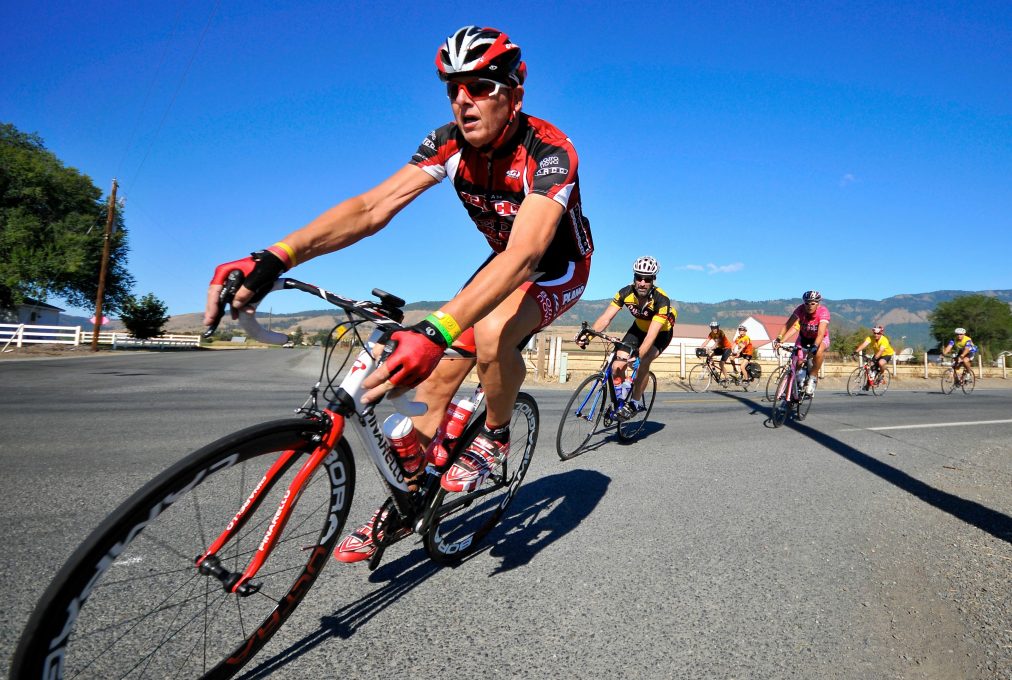Injury Prevention for Cyclists

There has been a rapid increase in new cyclists hitting the road especially between the ages of 40-50 and is gaining even more popularity than golf, especially in the lower mainland. Former athletes with osteoarthritis and joint related conditions are turning to cycling as a means to keep fit without high impact. As the early summer weather presses on I have been seeing more cycling injuries specifically knee related (ITB syndrome, patellofemoral pain syndrome), and neck and low back pain. Similar to running, cycling is a long duration, repetitive sport (cycling at 90 RPM for 1 hour = 5400 revolutions of each leg!), and requires a sustained posture through your cervical spine and back, as well as constant hip flexion and knee flexion in only one plane of movement. Ultimately, the nature of the sport without appropriate alignment, strength, flexibility and proper bike fit can lead to repetitive strain and injury.
Some factors that can predispose one to injury include but are not limited to: poor posture and knee tracking, incorrect saddle or handlebar height, cleat positioning, inefficient pedal stroke, poor gear selection, and cadence. In the clinic, the muscle imbalances that I commonly see in cyclists are weak glutes, tight hip flexors, weak hip abductors, tight adductors, a weak core and tight pectorals or a rounded upper spine with poor scapular strength.
With all this in mind where do you start?
Get your bike fit to your body! Having a professional adjust your bike is a great investment especially if you intend to go for longer more frequent rides. If you have chronic low back, neck or shoulder pain, you may consider adjusting or finding a bike where your body can be positioned more vertical as to reduce strain and fatigue through these areas.
Watch your posture and your alignment! Grip on the handles should be light with elbows slightly bent. Your core muscles should be engaged with lower abdominals drawing in towards your spine, elongating your torso – avoid rounding throughout your lower back. Bring your chest slightly forward with shoulder blades gliding back and down. Lastly, the ball of your foot should be positioned on the pedal with your knees tracking straight forward, thighs parallel.
As previously mentioned poor biomechanics and muscle imbalances can be a large contributor to aches and pains while riding. Here are some Strengthening Exercises as well as some Mobility & Stretches that I find are helpful in injury prevention! Enjoy the sun and happy cycling!
Charlene Copeland, MPT, CAFCI, NKT®, Clinical Pilates, IMS

About twice a month our therapists will be posting answers to commonly asked questions. So, if you have a burning question that you want answered let us know in the comments below.
We can cover anything ranging from active rehabilitation, to injury prevention.
This week our featured therapist is Charlene Copeland. To learn more about Charlene check out our PhysioWorks team.


Leave a Reply